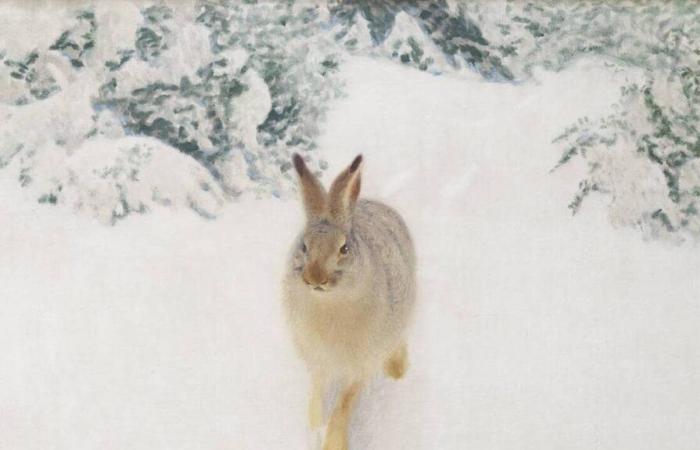A hare, facing forward, emerges from an undergrowth of fir trees, it advances in the snow and seems to be heading towards the viewer. This oil on canvas, dated 1905, sums up in itself the talent of Bruno Liljefors, Swedish painter, nicknamed in his time the “prince of animal painters”. The Petit Palais, in Paris, presents around a hundred works, paintings, drawings, photos from Swedish museums and private collections.
Liljefors grew up in Uppsala, north of Stockholm, an area surrounded by vast expanses of wilderness. At a very young age, he sketched from life. After a stint at the Royal Academy of Painting and a few trips to Germany and Italy, he settled in Grez-sur-Loing (Seine-et-Marne) among a colony of Nordic artists.
Like a photographer
But he quickly returned to his country to devote himself to Swedish nature and its animals. Family of foxes, cat on a flowery meadow, bullfinches, sparrows in a cherry tree, finches and dragonflies, eagle owl in the heart of the forest. Liljefors captures nature and the surrounding wildlife like a photographer. He settles in as close as possible, in immersion.
The painter represents the animals truly in their natural environment, at a given moment of their day, of their life: hunting, birth, courtship, feeding the young… With a predilection for foxes and cats. It also shows species that city dwellers do not know.
Acrobat and gymnast
The artist develops all kinds of devices to observe animals without being seen. He camouflages himself and makes hides where he hides to watch as he pleases. The painter is also an acrobat and an excellent gymnast.
“By setting up a real system of ropes, he could climb, or launch himself in stages, to the top to study the young birds in the absence of the adults in search of food,” underlines Carl-Johan Olsson, curator of 19th century paintingse century at the Nationalmuseum in Stockholm.
At one point in his life, the painter left his forest to settle on the island of Östra Lagnö north of Stockholm. The coastline and its fauna will obviously be at the heart of its production which captures the Scandinavian light and atmosphere so well.
Exhibition at the Petit Palais, avenue Winston Churchill, Paris 8th. Until February 16.







